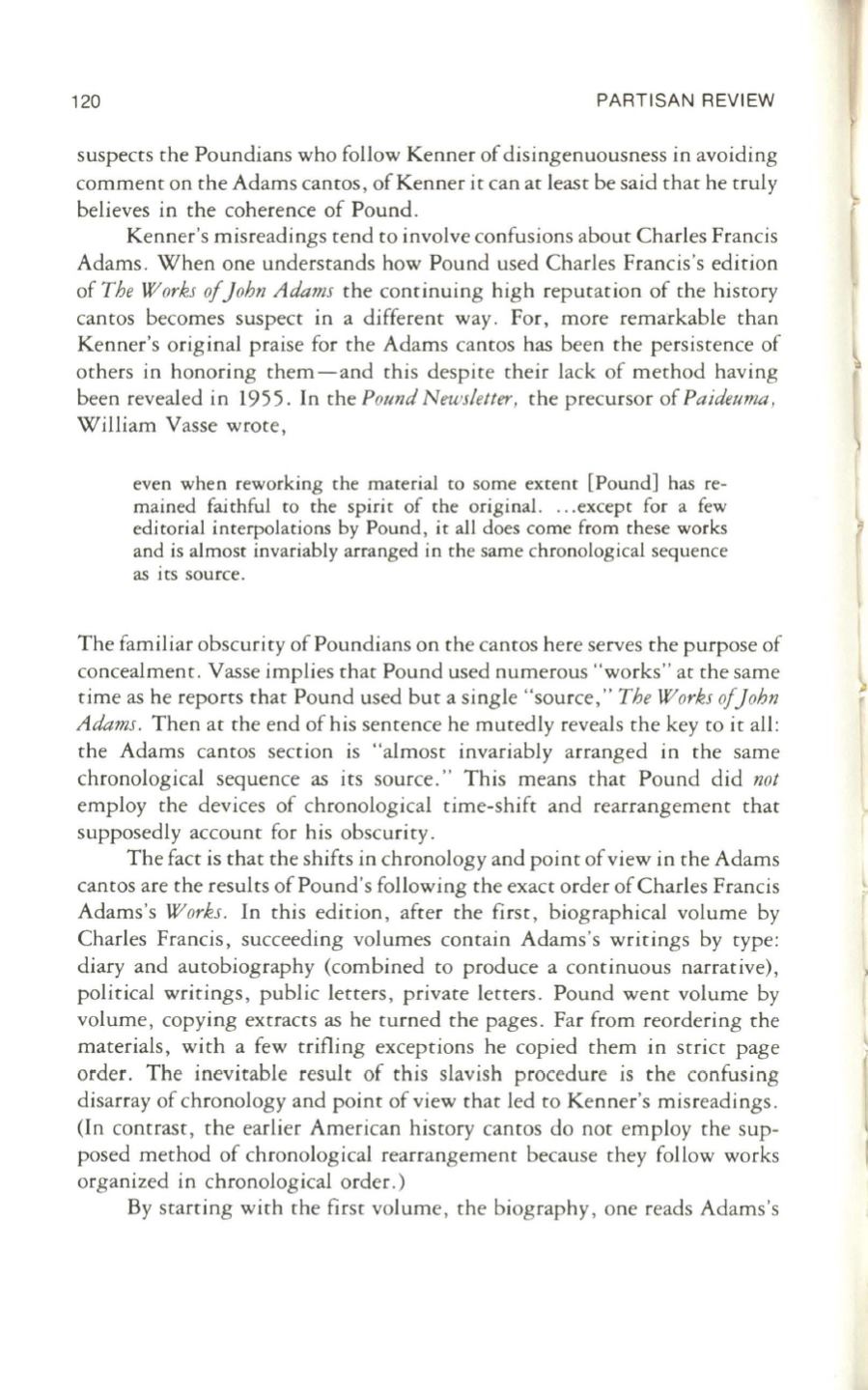
120
PARTISAN REVIEW
suspects the Poundians who follow Kenner of disingenuousness in avoiding
comment on the Adams cantos , of Kenner it can at least be said that he truly
believes in the coherence of Pound .
Kenner's misreadings tend to involve confusions about Charles Francis
Adams . When one understands how Pound used Charles Francis's edition
of
The W orks
0/
J ohn Adams
the continuing high reputation of the history
cantos becomes suspect in a different way . For, more remarkable than
Kenner's original praise for the Adams cantos has been the persistence of
others in honoring them -and this despite their lack of method having
been revealed in 1955 . In the
Pound N ewsletter,
the precursor of
Paicieuma ,
William Vasse wrote,
even when reworking the material to some extent [Pound] has re–
mained faithful to the spirit of the original. ...except for a few
editorial interpolations by Pound, it all does come from these works
and is almost invariably arranged in the same chronological sequence
as its source.
The familiar obscurity ofPoundians on the cantos here serves the purpose of
concealment . Vasse implies that Pound used numerous "works" at the same
time as he reports that Pound used but a single "source, "
The W orks o/John
Adams .
Then at the end of his sentence he mutedly reveals the key to it all :
the Adams cantos section is "almost invariably arranged in the same
chronological sequence as its source ." This means that Pound did
not
employ the devices of chronological time-shift and rearrangement that
supposedly account for his obscurity.
The fact is that the shifts in chronology and point ofview in the Adams
cantos are the results of Pound's following the exact order of Charles Francis
Adams's
W orks .
In this edition, after the first, biographical volume by
Charles Francis, succeeding volumes contain Adams 's writings by type:
diary and autobiography (combined to produce a continuous narrative) ,
political writings , public letters , private letters. Pound went volume by
volume, copying extracts as he turned the pages. Far from reordering the
materials, with a few trifling exceptions he copied them in strict page
order. The inevitable result of this slavish procedure is the confusing
disarray of chronology and point of view that led to Kenner's misreadings.
(In contrast, the earlier American history cantos do not employ the sup–
posed method of chronological rearrangement because they follow works
organized in chronological order.)
By starting with the first volume , the biog raphy , one reads Adams 's


